Dürnstein – Pearl of the Wachau

Situated on the section of the Danube River known as the Wachau Valley, between Melk and Krems, Dürnstein is considered by many to be the “Pearl” of the Wachau. Legend has it that Richard the Lionheart was imprisoned there back in 1192 on his way home from the Third Crusade. The castle where he was supposedly imprisoned is that of the Kuenring family, high above the river. Badly damaged in the Thirty Years War (1645), it was allowed to fall into disrepair. It stands at 159 metres, on the highest ridge of a mountain of granite from which the town got its name (dürr stein – dry stone). In fact it is difficult to distinguish the ruins from the rocks. It is still possible to hike up to the ruins from the Hauptstrasse behind the Schloss Dürnstein (1622), now a luxury hotel.
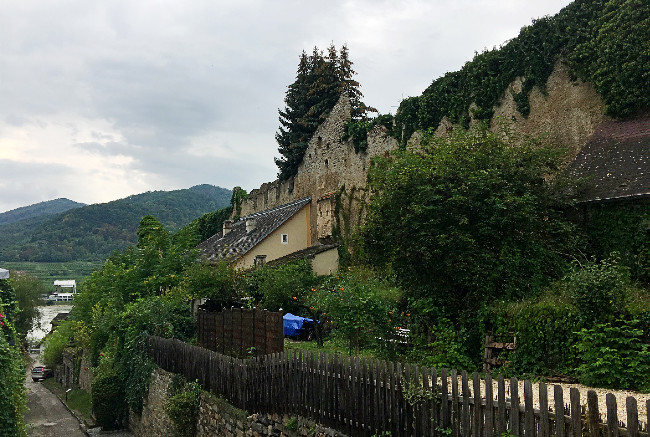
Elsewhere in town it is possible to find remnants of the old fortifications linking the castle to the town. Dürnstein was incorporated into the UNESCO World Heritage Sites in 2000 due to its historical significance.
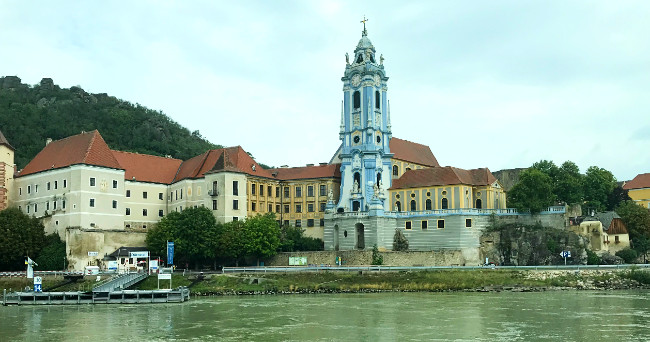
By far the most striking architectural feature of Dürnstein is the Baroque blue and white tower of the Augustinian Abbey Church, Stift Dürnstein. It reminded me of the Wedgewood Jasperware that I collect. This tower was constructed in 1733 but the beginnings of the complex as a whole – the church, courtyard, cloisters and a monastic building – can be traced back to the 15th century.
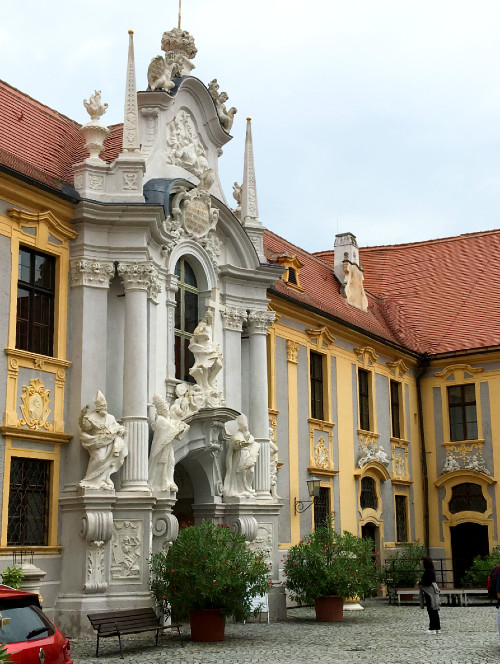
However it was modified in the Baroque style in the first half of the 18th century. Independent visitors can access the courtyard (above), church, and main terrace. Guided tours also allow access to the crypt and the cloister.
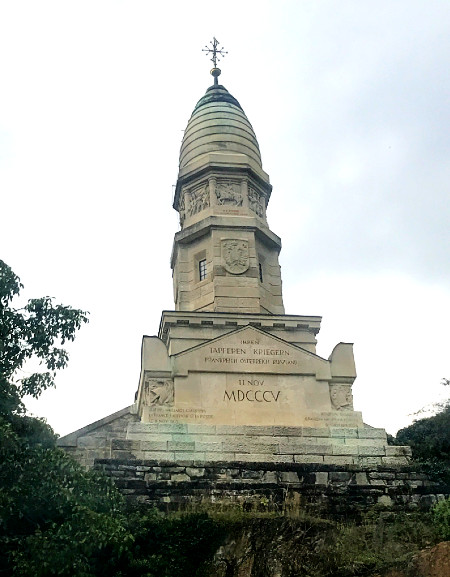
Dürnstein again came into prominence in 1805 during the Napoleonic Wars when French troops ran into the Austrian/Russian army on the same river bank. Both sides claimed victory but losses were heavy – about 5,000 troops on each side. The mortal remains of thousands of these men were placed in a crypt in the Dürnstein cemetery and in 1905 a memorial, commonly called the French Monument, was erected to commemorate the battle just outside the town.

This tiny town on the banks of the Danube gets its charm from a mix of authentic historic buildings, its river-side location and its reputation as a producer of fine wines. We entered the town through the old fortified gate at the eastern end of the town and strolled along the quaint Hauptstrasse lined with houses overflowing with window boxes and small shops. Dürnstein apparently is the place to buy products made from apricots – jam, chutney, chocolate, liqueur and all manner of fruity souvenirs.

Interesting buildings in the town include the decorative old Town Hall, built in 1547 in a late Gothic building in the centre of town, but later in 1563 renovated in the Renaissance style with unusual sgraffito decor around the windows and doorway. Accommodation in a pension is available at the rear.
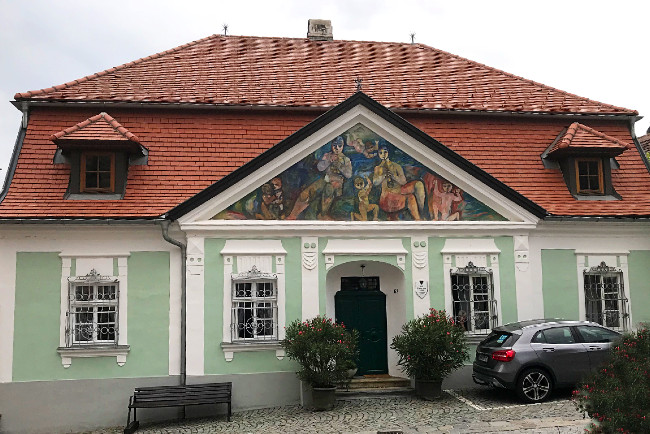
The Baderhaus (Bath House) was built in the late 18th century in a classicist style. Its symmetrical proportions include a pediment with a very colourful modernist mural of a family of musicians painted in 1963.
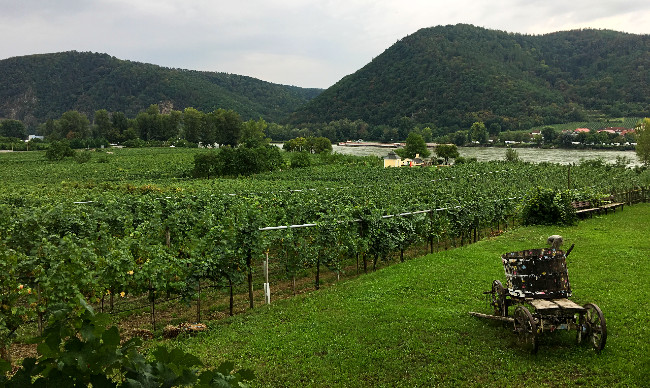
All about the town we were surrounded by vineyards, so we made sure to sample a few wines while we waited for our fellow travellers to reassemble for the walk back to our river ship. We had come across the typical white wine of the region – Grüner Veltliner – on other cruises, so were particularly pleased to discover it was from this area. It is a light, dry wine with a refreshing acidic tang. The red Blaufränkisch was a dark, full-flavoured wine, very much suited to our Australian palates. Now we were getting a better idea of what wines to order with our meals as we continued our travels through the heart of Europe.






























